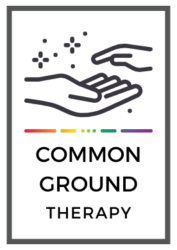What I have learned about healing trauma
As an Asian American transmasc person who has been in and out of therapy for over 20 years, I believe I have come a long way in learning about my own mental health and healing. While traditional therapy has offered many tools for coping, it is hard to admit that I haven’t always used them. I believe that a lot of my progress in therapy has been hindered by developmental trauma that affected my inner core identity. I think the fact that I am Asian has made recovery all the more difficult. As a therapist myself, I understand that what we need the most is to find a healthy relationship on which to mirror or imprint other positive, healthy relationships. Mirroring is the process by which we develop our sense of self by having our emotions reflected back to us as fully acceptable and not threatening in an authentic way. This process has been more difficult because of the simple fact that I look different from most white therapists and have never found an Asian therapist I could work with. Not only do they look different from me, but to them, I look different, which I think means that they lack the ability to interpret my emotional states as non-threatening.

What is centering?
I define centering as follows: It is getting in touch with my core sense of goodness, wonder and connection with other beings that is unconditional and unwavering. I write this post as a way of helping others to recognize their own needs for developing their core identities in whatever way appeals to them. This is often a spiritual task and one that isn’t often explored in traditional therapy, but it can be an incredibly powerful resource in the process of healing.
Like many people with complex trauma, relationships with family members were not healthy. In my extended family, I cannot think of any relatives living or recently deceased who are healthy or with whom I had a healthy relationship. As for core identity, if we do not find it in our relationships starting with therapy, how do we find it? Perhaps there is a spiritual side to healing trauma. My instinct has always been to cultivate my own unique sense of spirituality. I’ve always been drawn to nature, even to go so far as to believe without a doubt that non-human beings in nature have a soul and that I have a connection with nature as a whole. I also draw upon my belief that my distant ancestors are a part of me and that I can learn to recognize their influence on me in my present life, even if I did not know them directly. I describe my spiritual beliefs as Animist. I believe that my true self is connected with nature and that it manifests through my creative nature. In nature, I don’t feel I have to try to be different in any way. I can just be with it and feel okay with myself. Thus, an important part of my own recovery has involved centering myself as whole and as part of nature. Without it, I didn’t make much progress in therapy, no matter how good the therapist, because I lacked a sense of my own core identity. As I learned to recognize my core identity, healing started to happen on a deeper level.


